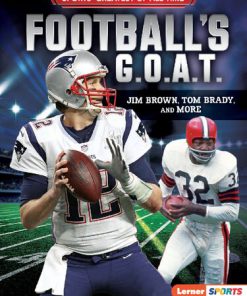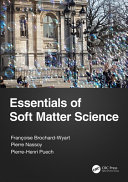NSCA is Essentials of Sports Science 1st Edition by Duncan French, Lorena Torres Ronda 1492593354 9781492593355
$50.00 Original price was: $50.00.$25.00Current price is: $25.00.
NSCA is Essentials of Sports Science 1st Edition by Duncan French, Lorena Torres Ronda – Ebook PDF Instant Download/Delivery: 1492593354, 9781492593355
Full download NSCA is Essentials of Sports Science 1st Edition after payment

Product details:
ISBN 10: 1492593354
ISBN 13: 9781492593355
Author: Duncan French, Lorena Torres Ronda
Within the domain of sport, the application of science is more apparent than ever before. Not only are universities and academic institutions scientifically investigating sport as one element of human performance, but professional teams, sporting organizations, and private training companies are embracing approaches that use scientific principles to help their athletes and teams gain a competitive edge in sporting competition. The potential for applying science to sport training and sport performance is vast. There is a demand for sport scientists who can collect and convert data into valuable information—information that drives decision making and directly influences performance outcomes. To address this growing need, the world-renowned National Strength and Conditioning Association developed the Certified Performance and Sport Scientist (CPSS) certification, along with the must-have reference for anyone in the field. NSCA’s Essentials of Sport Science features contributions from 52 globally recognized experts and thought leaders from the field of sport science. It is the only resource to go beyond sport science’s foundations—physiology, biochemistry, biomechanics, nutrition, and skill acquisition—to address the use of statistics and broader fields of data science, analytics, and technology management. Readers will explore every aspect of the sport scientist’s role: understanding training theory, performing needs analyses, conducting athlete monitoring and assessment, managing data and analytics, and educating and disseminating information. The integration of these technical skills will guide sport scientists in drawing conclusions that can be used to manipulate training methods and shape competition strategies for the betterment of athletes’ health, well-being, and performance. NSCA’s Essentials of Sport Science offers a holistic overview of the technical expertise, skills, and knowledge required to operate effectively as a modern-day sport scientist. Further, it will help prepare candidates for the NSCA’s CPSS certification exam and aid all sport scientists in acquiring and using the best available evidence—at the right time, in the right environment, and for the right individual—to maximize their performance.
NSCA is Essentials of Sports Science 1st Table of contents:
Part I: Training Theory and Process
Chapter 1. Performance Dimensions
Why Sports Need Scientists
The High-Performance Unit
The Evolution of the Sport Scientist Role
Chapter 2. Training Load Model
Managing the Training Process
Developing a Training System
Quantifying Training and Competition Load
Examining Load, Injury, Illness, and Performance Interactions
Developing Load Monitoring Systems and Strategies
Chapter 3. Periodization and Programming for Individual Sports
Periodization: An Integrated Multifactorial Construct
Role of the Sport Scientist in an Individual Sport
Periodization and Designing a Plan
Schedule Management: Off-Season, Preseason, In-Season, and Congested Schedules
Periodization and Programming for Individual Sports Versus Team Sports
Tapering
Data Sharing and Context Adaptation
Chapter 4. Periodization and Programming for Team Sports
Physiological Characteristics of HIIT
The HIIT Weapons
Programming HIIT
HSR Intensity: Worth Considering?
Sample Training Programs
Integration of HIIT Into the Weekly Training Cycle
Part II: Needs Analysis
Chapter 5. Key Performance Indicators
Analysis of the Sport
Sport Demands
Determinants of Successful Sport Performance
Organizational and Governance Aspects
Key Performance Indicators in Sport
Rules, Characteristics, and Other Sporting Constraints
Chapter 6. Profiling and Benchmarking
Analysis of the Athlete
Maturation and Long-Term Development
Performance Norms
Benchmarking and Data Interpretation
Using Data to Guide Short- and Long-Term Development
Part III: Technology and Data Preparation
Chapter 7. Technological Implementation
The Innovation Process
Roadmap for Technology Implementation
Data Security and Technology
Chapter 8. Data Hygiene
Managing Data
Maintaining Data Integrity
Part IV: External and Internal Load Data Collection
Chapter 9. Characteristics of Tracking Systems and Load Monitoring
Characteristics
Key Metrics
Future Directions
Chapter 10. Analysis of Tracking Systems and Load Monitoring
Validity and Reliability of Tracking Systems
Analysis and Interpretation of Tracking System Data
Innovations in Data Collection and Sharing
Chapter 11. Kinematics and Gait Analysis
Kinematic Variables
Analysis and Interpretation of Kinematic Data
Processing Kinematic Data
Tests and Variables for Kinematic Analysis
Innovations in Kinematic Analysis
Chapter 12. Kinetics and Force Platforms
Profiling and Benchmarking
Load–Response Monitoring
Rehabilitation and Return to Sport
Test Administration and Practical Considerations With Force Platforms
Innovations in Kinetics and Force Platform Analysis
Chapter 13. Strength Tracking and Analysis
Specific Versus Nonspecific Strength
Strength as a Velocity-Dependent Concept
Force–Velocity–Power Profile
Innovations in Force–Velocity–Power Profiling
Chapter 14. Heart Rate and Heart Rate Variability
The Regulation of Heart Rate
Heart Rate and Heart Rate Variability Monitoring
Heart Rate and Heart Rate Variability Measurement
Analysis and Interpretation of Heart Rate and Heart Rate Variability
Modeling Training Load Using Heart Rate and Heart Rate Variability
Monitoring Changes in Fitness and Fatigue
Innovations in Heart Rate and Heart Rate Variability Monitoring
Chapter 15. Electroencephalography and Electroneuromyography
Electroencephalography Overview
Electroneuromyography Overview
Future Directions for Monitoring the Neuromuscular System
Chapter 16. Biomarkers for Health and Performance
Internal Regulation and Feedback Systems
Biomarkers in Sport
Characteristics of the Biomarkers
Key Metrics for Relevant Biomarkers
Analysis and Interpretation of Biomarker Data
Evolution of Biomarker Data
Chapter 17. Perception of Effort and Subjective Monitoring
Measurement of Exercise Intensity and Internal Load Using Perceived Exertion
Measurement Properties of RPE and sRPE
Influence of Psychological Factors in Athlete Monitoring
Variations of Subjective Measures in Athlete Monitoring
Assessment of Training and Competition Response Using Subjective Measures
Collection of sRPE and AROMs in the Applied Environment
Limitations and Misconceptions of sRPE and AROM
Development of a Subjective Monitoring System
Part V: Data Analysis and Delivery
Chapter 18. Statistical Modeling
Data Types
Statistical Modeling
Statistical Inference
Null-Hypothesis Significance Testing
Magnitude-Based Inference
Measurement Studies
Interpreting Individual Changes Using SESOI and TE
Chapter 19. Injury Risk Model
Injury Risk Theory
Injury Risk Data Collection
Injury Risk Delivery, Dissemination, and Decision Making
Chapter 20. Data Mining and Nonlinear Data Analysis
Performance Analysis
Data Mining
Data Mining in Sport Science
Chapter 21. Data Delivery and Reporting
Data Visualization Design With the Audience in Mind
Fundamentals of Human Visual Perception
Types of Data Visualizations
Visualization of Uncertainty in Data
Data-Driven Storytelling
Context-Specific Factors in Sport
Examples of Data Visualization in Sport
Chapter 22. Performance Interventions and Operationalizing Data
Key Stakeholders
Performance and Research Differences
Sport Science in the Applied Setting
Data, Critical Thinking, and Decision Making
Case Study: The Role of Sport Science in the Performance Development of Major League Pitchers
Performance Investigation
Part VI: Special Topics
Chapter 23. Recovery and Sleep
Recovery Strategies
Recovery and Adaptation
Recovery Program Design
Chapter 24. Fueling and Nutrition
Energy and Body Composition Management
Fueling for Training and Competition
Hydration
Recovery and Adaptation
Nutrition for Health and Injury Prevention
Supplements and Sports Foods
Nutritional Assessment and Referral for Expert Advice
Chapter 25. Environmental Stress
Performance and Safety in the Heat
Programing at Altitude
Chapter 26. Psychobiology: Flow State as a Countermeasure to Mental Fatigue
Flow State and Its Impact on Performance
Mental Fatigue and Its Impact on Performance
Strategies for Finding Flow and Managing Mental Fatigue
Summary of Psychobiology
Chapter 27. Neuroscience Approach to Performance
Nervous System and the Brain
Neuroplasticity
Cognitive Function and Performance
Cognitive Training Applications
Relaxation and Regeneration
Chapter 28. Motor Performance
Key Factors in Learning and Motor Performance
Key Motor Performance Factors and Performance Optimization
Implications for Applied Sport Science
Chapter 29. Sport Science of Injury
Muscle Injury
Tendon Injury
Bone Injury
Ligament Injury
Pain
Planning the Rehabilitation Program
Returning to Competition
Part VII: Education and Communication
Chapter 30. Interdisciplinary Support
Holistic Approach to Sport Performance
Interdisciplinary Teams
Interdisciplinary Models Versus Multidisciplinary Models
Evidence-Based Practice
Chapter 31. Information Dissemination
Maximizing the Impact of Research
Communicating Potential Solutions
Disseminating Information to the Performance Team
Evolution of Information Dissemination
People also search for NSCA is Essentials of Sports Science 1st:
nsca’s essentials of sport science pdf
nsca’s essentials of sport science textbook
nsca’s essentials of sport science
nsca essentials of sports science
Tags:
Duncan French, Lorena Torres Ronda,Essentials,Sports
You may also like…
Biology and other natural sciences - Microbiology
Essentials of Medical Microbiology Revised Edition S Apurba Sastry
Uncategorized
Football s G O A T Jim Brown Tom Brady and More Sports Greatest of All Time Lerner Sports Joe Levit
Hobbies & Games - Bodybuilding
NASM Essentials of Personal Fitness Training 6th Edition National Academy Of Sports Medicine (Nasm)
Medicine - Health-Related Professions
ACSM s Nutrition for Exercise Science 1st Edition American College Of Sports Medicine Dan Benardot
Biology and other natural sciences - Biology
Essentials of Biology 7th Edition by Sylvia Mader 9781266093593 1266093591
Earth Sciences - Oceanography
Essentials of Oceanography, 8e 8th Edition by Tom S. Garrison 1337098647 9781337098649
Biography & Autobiography - Political
Women s Sports A History 1st Edition by Guttmann Allen ISBN 023106957X 9780231069571
Biology and other natural sciences - Biophysics











